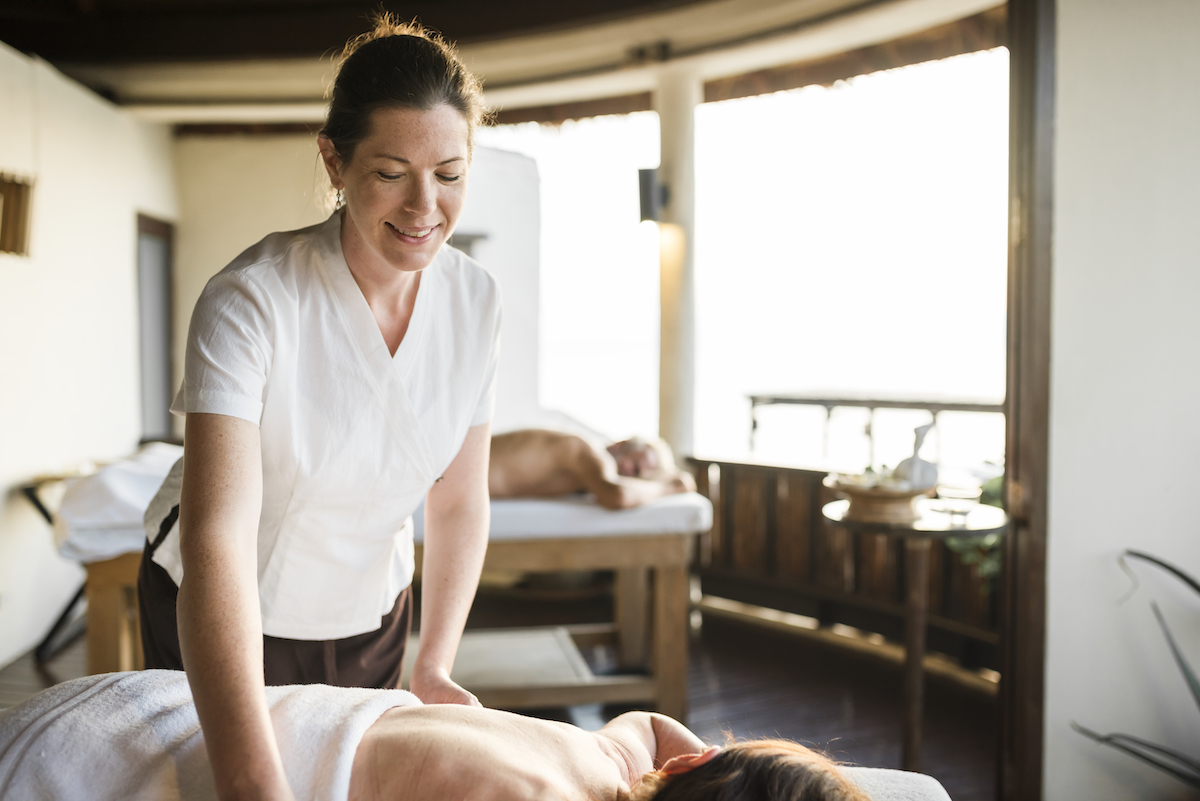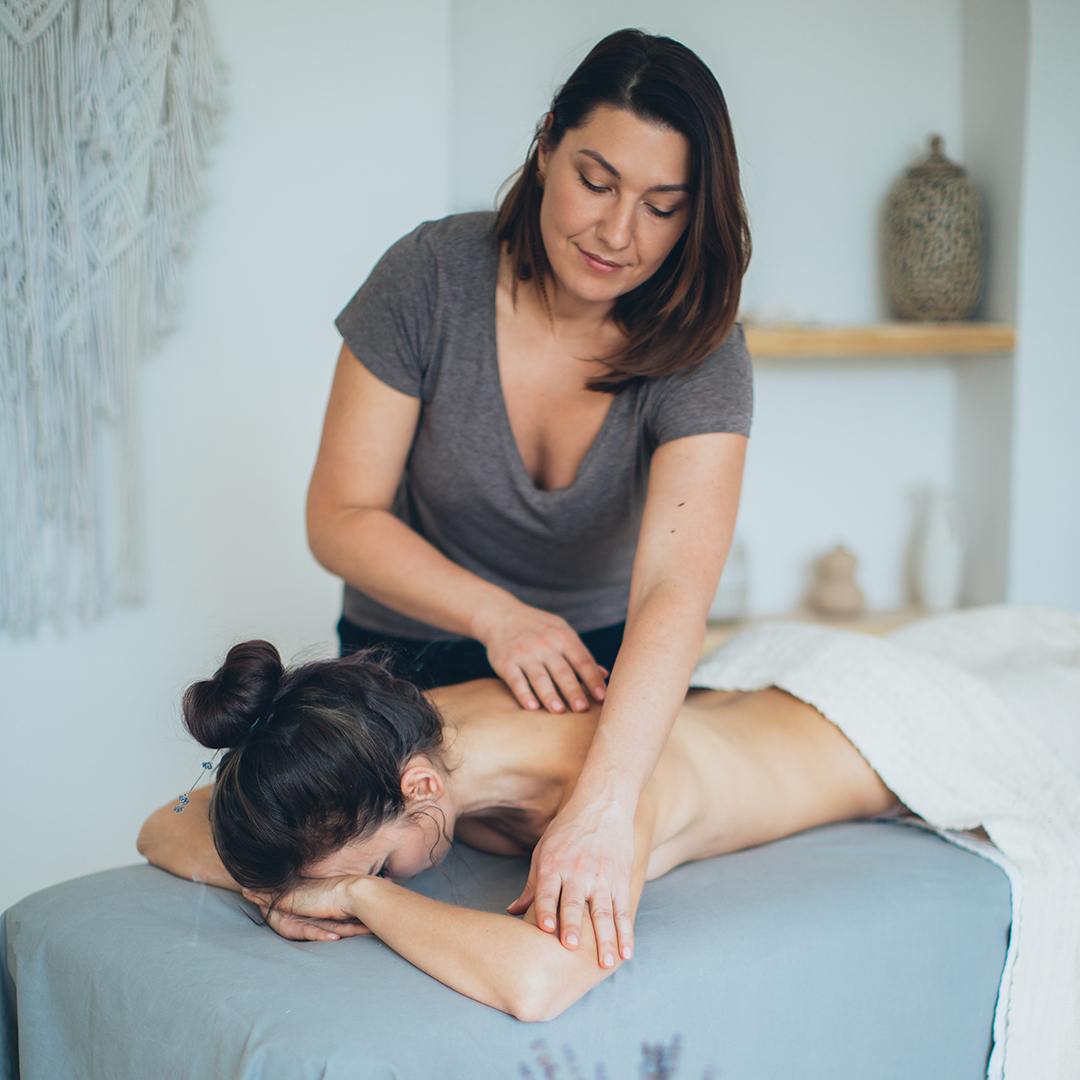Can a strong living be made from massage therapy? Absolutely, as robust economic numbers from the American Massage Therapy Association (AMTA) demonstrate. Below, we review the rosy figures from the AMTA, including market projections, labor rates, and projected career earnings.
Drawing from government statistics, clinical studies, and surveys of Licensed Massage Therapists (LMTs) as well as consumers, the AMTA sought to deliver a big-picture review of the massage profession in their recent “Massage Therapy Industry Fact Sheet.” For students currently completing massage therapist schooling, the news is very positive indeed. LMTs already in the middle of their massage careers can also rest assured that massage training school was a good investment.
Let’s begin with a review of the massage therapy industry as a whole. In 2018, the U.S. massage therapy market was worth $18 billion. Compare this to the $6-$11 billion estimated worth of the market in 2005, and it becomes clear that the industry is enjoying healthy growth. For further evidence, consider that revenue growth in the larger alternative/complementary healthcare industry, including massage therapy, revenue increased 3.6% from 2014 to 2018, and employment grew by 3.6%. Revenue growth in this sector is estimated at 1.9% through 2024.
To drill down on who receives massage therapy, let’s take a look at who gets massage therapy, where therapy is received, and why people opt for massage. The 2018 AMTA Consumer survey found that 19% of consumers received at least one massage between July of 2017 and July of 2018. Over the past five years, an average of 31% of Americans received a massage. These numbers may be conservative; a Zogby Analytics consumer survey found that 28% received a massage in the year prior to July 2018. It appears women are more likely than men to receive massage; 21% of women versus 16% of men reported having a massage in the past year.
What about locations for receiving massage? Here’s the breakdown of where consumers received a massage, from most popular to least popular:
- 38%: Massage therapist’s office or location
- 33%: Spa
- 19%: A three-way tie between a resort/hotel/cruise, a private home, or in a massage therapy franchise/chain.
- 16%: Chiropractor’s office
- 11%: Tie between a physical therapist’s office or a Physician’s office/medical clinic
- 10%: Beauty salon
- 7%: Workplace
- 6%: Health club
- 4%: Alternative therapy clinic
- 1%: Tie between a hospital or a massage school clinic
We noticed that these percentages add up to more than 100%, suggesting that some consumers received massages in more than one location.
Another area of interest for massage therapists is why consumers choose to receive massage. The majority of consumers reported receiving massage for health and wellness; 88% believe massage can be an effective way to alleviate pain, while 62% receive massage for health/medical reasons such as injury rehabilitation (20%), pain management (44%), or overall wellness (48%). Soreness, stiffness, or spasms are the reason for massage among 48% of consumers. During the same period from July 2017 to July 2018, 66% of consumers had a massage for stress reduction/relaxation. Again, it appears people receive massage for multiple reasons.
And medical providers continue to discuss and recommend massage for their patients. In the year prior to July 2018, 46% of Americans and talked about massage with their health care providers. Of those discussions, 47% of doctors/health care providers referred a massage therapist, or strongly recommended/encouraged massage therapy.
As you can see, getting an education in massage is a good bet. The market is growing steadily; consumers receive massage in multiple locations and for various reasons. If you’re comparing massage training schools, we recommend looking into their accreditation. At a minimum, a massage school should meet the state requirements for licensure. East West College exceeds this standard, with COMTA accreditation. Our program is also approved by the Oregon Board of Massage, as well as the Oregon Vocational Rehabilitation Division and the Oregon Higher Education Coordinating Commission. Learn more about our educational offerings today, by getting in touch with our admissions department.




